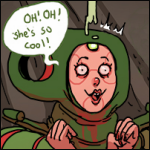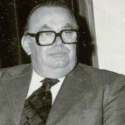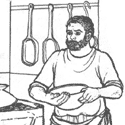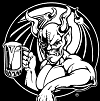|
You know, this peace is what all true warriors strive for.
|
|
|
|

|
| # ? Jun 9, 2024 04:25 |
|
Could we get a current diplomacy/relations update please?
|
|
|
|
Clearly we need to show the perfidious English what for before our long and worried career comes to an end.
|
|
|
|
Honestly at this point, do we have Bombentorpedo? Because in my experience once you have that you just stop using Dive Bombers and load your fighters with bombs for the same job. Since misses start turning into torpedo hits and 2000 lbs AP bombs gently caress people up good and Dive Bombers just tend to die a lot.
|
|
|
|
Pershing posted:Could we get a current diplomacy/relations update please? Sure! However, I’m away from my desktop for a few days. I can give that update on Saturday.
|
|
|
|
Looking forward to the coming Jetpocalypse.
|
|
|
|
Pershing posted:Could we get a current diplomacy/relations update please? Currently we have at least neutral relations with every other major power; following our last war with Japan, which our ally the US joined on our side, but no other nations joined on the Japanese side. 
|
|
|
|
DEATH TO THE ENGLISH.
|
|
|
|
habeasdorkus posted:DEATH TO THE ENGLISH. Perfidious Albion must fall.
|
|
|
|
Unité l'Europe - Merdeé et Albionais!
|
|
|
|
Pirate Radar posted:JANUARY 1953 If Canada isn't a playable country, then the choice of the Avro Canuck for this picture is most perplexing. (I don't mean to offend any Canadians, but the Canuck looks absolutely ridiculous with the engine over the wing like that; I'm pretty sure I designed that exact plane in Kerbal Space Program while drunk one night.)
|
|
|
|
Counter point: the Canuck wasn't even the most aerostheticly outrageous fighter to fly that year. Boulton-Paul P.111
|
|
|
|
Looks like a flying whale shark.
|
|
|
|
Absolute unit.
|
|
|
|
TheNakedJimbo posted:If Canada isn't a playable country, then the choice of the Avro Canuck for this picture is most perplexing. Did Canada have full independence through most of the time period the game takes place in? Might be that it's a case of they're meant to be covered by Great Britain.
|
|
|
|
Rule the Waves doesn’t model countries in enough depth for Canada to appear partway through the game, so the areas that make up Canada are just modeled as foreign possessions that Britain owns.
|
|
|
|
 JULY 1953 Our agreement with the United States has always included a sunset clause, and now it arrives. The current administration is uninterested in renewing it further.  The Austrian k.u.k. Seefliegerkorps adopts its first jet fighter in this month; the Berg 74 is thought to be comparable to one of the earlier variants of our Loire et Olivier jet.  AUGUST 1953 * The North Atlantic Crisis actually begins in the Netherlands, where speculators have driven up the price of certain strategic metals and oil on the country’s exchange markets. Ordinarily, this would not affect the country’s neighbors overly much. However, when the investments fail to pay out as much as expected, it is revealed that Danish banks had recently been borrowing significant amounts of money and placing bets of their own on Dutch markets. A collapse in the value of oil futures in particular leaves the Danish banks scrambling to cover their obligations. The Danish government is required to step in and repair this vulnerability in the country’s economy, but this only exposes further vulnerabilities. Iceland’s independence movement has been simmering more and more for decades, placated from time to time by concessions from Copenhagen, but seems to see the Danish financial crisis as an opportunity. Soon, Reykjavik is rumbling with news of independence meetings. The biggest news, however, comes from the harbor. The German cruiser Freya appears from the ocean one day, and as it approaches the news starts to circulate in the city streets that independence is forthcoming, and that the Germans have offered to guarantee it. This comes as a surprise to some parts of the independence movement but seemingly not others; the Icelandic right welcomes German “partnership” with open arms, as the Greek fascists did. France objects to this news, and reaches out to other European nations to better solve the problem, but the damage has been done before the British can respond, and the Italians back up Germany’s move. Soon, Freya is being joined in Iceland by units of the Luftwaffe, extending Germany’s air coverage past what we think of as our cordon in the North Sea and into the Atlantic.   The Foreign Ministry is quick to denounce this military move, and our ambassador demands the withdrawal of all German military forces from Iceland. Germany’s defiant response is to inform us of its plans for large naval maneuvers in the North Sea and Atlantic near Iceland. This will not stand.  * Since volume of antiaircraft fire is so important, especially with aircraft moving faster and faster, we are now mounting four guns next to each other in each emplacement.  SEPTEMBER 1953 The Navy orders major fleet units to be brought to readiness; leave is cancelled throughout the Atlantic fleet, and our primary carrier group based around Firasabé and Ibijau Ultime is placed on high alert.  OCTOBER 1953 In order to support the activation of additional naval patrol squadrons, we secure a supplementary funding package from parliament.  In our exercises, the defense of the fleet’s most prominent units--its carriers--has grown until it is a veritable wall of steel extending three hundred and sixty degrees around the ship. Battleships, cruisers, and destroyers sailing in formation can put up huge amounts of antiaircraft firepower, hopefully enough to intercept enemy aircraft that might be approaching at extreme speed.  NOVEMBER 1953 By now the crisis in Iceland has spiraled beyond anyone’s predictions. We have offered to back up Denmark’s claims of continuing sovereignty over the island, and their claim is bolstered by reports of infighting, some of it violent, within the Icelandic independence movement itself. There are now those within Reyjavik, even those who supported the declaration, who are balking at the reality that the Germans have supported and engaged most closely with the fascist elements within Icelandic politics. Firasabé’s battlegroup leaves Brest in early November on a mission borne of political motivations. The new Icelandic government has proclaimed an exclusive zone of control around the island, but Denmark gives us permission to enter the waters it still claims as its own. German ships appear to bar Firasabé’s path as she approaches the limit line. Amid a tense scene in which Germans with loudspeakers attempt to order our vessels to turn back, a lookout aboard Amiral Charner reports spotting a torpedo wake. Both navies were already poised for war. The beginning--that rush of tension releasing like a coiled spring--comes in a sudden burst of gunfire, and soon the French and German battlegroups near Iceland are trading shots. At the speed of light, radio reports of the skirmish go back to the European mainland, and the Franco-German border once more becomes the frontline of a war.  Germany’s outposts are still spread around the world. Plans for taking them if the opportunity arose were made starting long ago. In the Pacific, there is no enemy territory within range: In Europe the situation is different. The Navy soon begins considering the prospect of an amphibious invasion of either Iceland or German-allied Greece. But before either can be possible, the German navy must be defeated at sea and driven back into its ports.  Most of our capital ships are already in the European area, but since the threat to the colonies is minimal, some of those in Asia can be recalled. The battlecruiser Tourville remains on station for logistical reasons; her fuel tanks are small and require frequent top-ups, making her recall during wartime a logistical challenge that must be put off for now.  The German threat, as before, centers around large cruisers, now operating alongside aircraft carriers. The most dangerous among the German cruisers are a match or more for our vessels of comparable tonnage.   Their carriers, meanwhile, are better-armored than ours but typically carry fewer aircraft, save for the enormous Graf Spee, comparable to our Ultimes.   DECEMBER 1953 This is the moment when much interwar discussion of naval aviation can be tested. In our last war against Japan we used jet fighters against an enemy that lacked the same technology. Now we face aircraft of comparable technology and development to our own. The fleet is arrayed just out of the Channel, and will enter and secure the North Sea, aided by aircraft flying out of Norway. An initial set of exploratory raids is to be launched into Helgoland, to seek out German shipping near the coast and determine whether the enemy is at sea.  We have five carriers, including Ibijau Ultime, escorted by cruisers and destroyers of various sizes, all tasked to defend the aviation ships with their guns.  With practiced ease we send flights of fighters and bomber aircraft into the air and on their way to German waters. With no exact target, and with little time left in the short winter day, the raid is somewhat piecemeal, but with the jet fighters providing air cover the bombers will still be able to find and attack German targets as they see them.  As they proceed along the coast some slow-moving torpedo bombers are caught out by German jet fighters attacking from higher altitude. The results are deadly, but at first, the score is even: the Heinkel 163 jet fighters, perhaps with overconfident pilots, trade evenly against our much slower strike planes. It is the older BV 152s, still propeller-driven, that make the most kills.  Soon, responding to panicked radio calls, our own jets appear, and the sky is filled with contrails from a tangle of fighters. Our pilots come off better than the Germans, and again the jet-powered Heinkels fall from the sky in greater numbers--a fact that leads our analysts to speculate that the Heinkel pilots have not had enough training time in their new machines.  We cannot, however, stop the German fighters from taking more and more of a toll on the dispersed strike aircraft. The Heinkels may be flashier, but the BV 152s consistently prove to have more of a sting. Perhaps, in attack runs against the slower bombers, the speedy Heinkel jets have less time to shoot than the propeller fighters do.  Our bombers do report, with confidence, sighting and attacking a German carrier, and may have done enough damage to sink it, but take even more losses on the approach and in the attack.   In the failing light the now-depleted strikes return to the carriers, which have been steaming northeast to maintain roughly the same distance from the target area. As they do, however, radar sets onboard the fleet suddenly pick up low-level contacts: German aircraft, approaching fast from the port side!  This flight of medium bombers must have gone out earlier and be on its way back to base. Flying just above the waves, and coming in at dusk, they have escaped interception long enough to mount a dangerous attack. Port-side gunners on the carriers jump at the warning sirens and try to open fire visually, as the radar cannot get a clear enough picture. But as the bombers approach they release their payloads low over the water, trying to bounce the bombs off the waves and into the side of the hull.  Waterspouts thrown up by exploding bombs spray the ships and their crews with freezing cold droplets of salty North Sea water, and the Potoo Rufous, most venerable of our carriers, reverberates with a sudden CLANG. Much to the relief of the sailors aboard her, the bomb that caves in the hull and penetrates into a mechanical space proves to be a dud. The next morning finds the fleet in Norwegian waters and safe, though Potoo Rufous will need some time to repair her battle damage. If a German carrier has been sunk, as we believe, then we have come out better from this, but the toll the battle took on the attack squadrons onboard the carriers was terrible. * The aftermath of the battle is a deep reconsideration of our naval aviation doctrine. In the difficult conditions of the North Sea, close in to land, it is difficult for even our jet fighters to protect slow-moving strike aircraft from enemy interception. In better news, our new large cruiser Louis Pasteur is now complete. 
|
|
|
|
Potoo Rufous can never die!
|
|
|
|
Yes, the Potoo Rufous seems to be the venerable queen of the fleet. How long has she been in service? Also, I'm curious to see how the Pasteur acquits herself.
|
|
|
|
The enemies of France will be Pasteurized! These battles in the 50s with all those aircraft are a pain in the rear end to manage. Kudos.
|
|
|
|
Glad to see another update. Vive la France!
|
|
|
|
The toll on those torpedo bombers, jesus.  Do we have glide bombs or anything with a little bit of standoff? ASUW strikes like that one are going to cripple our carrier fleet's striking power.
|
|
|
|
It's almost all radar-guided CAP, standoff weapons need to be truly long range to escape that.
|
|
|
|
Might a better solution be to change our carrier composition to something more fighter-heavy, in an effort to clear enemy cap entirely before sending in our bombers?
|
|
|
|
 JANUARY 1954 The new year starts with a sore loss to us, as the old light carrier La Fayette is caught by surprise and struck by two German torpedoes. Despite full efforts from her crew, the flooding spreads throughout the ship’s lower decks and the ship is ultimately a loss.  In an attempt to cut us off from the Atlantic trade and demonstrate a form of dominance, a German squadron ranges north around the UK to Iceland and then down into the North Atlantic. Ultimately it draws close to France itself, entering the Bay of Biscay… but by then, we are warned of it. We cast our net into the Bay and look for the foe. Still, the German ships are able to penetrate our formation at night before being picked up by radar.  As the sun rises, battle is joined--but daytime flights are being dispatched from the coast.  The staggered formations of both fleets have left the combatants an awful mess; as Amiral Charner’s lookouts sight the enemy, so do those on the light cruiser Lalande on the other side of them. And German carriers are farther still to the west!  There are at least two fleet carriers and one light carrier here, within easy range of our light cruisers’ guns and torpedoes. Rushing to engage, we fire a huge spread at the German ships.  We are sure that the spread was well-aimed, and we see the German ships begin to weave around our torpedo wakes, but there is no luck for the torpedomen this morning.  To the east, the heavy cruisers engage each other. Amiral Charner and Montcalm are ready to fight, but in truth, they are outgunned by their German counterparts. Our cruisers are largely designed to escort carriers, while German ships are still built as their heaviest surface combatants, and carry bigger guns.  Montcalm takes several heavy hits, and the detonations start fires that rush through her superstructure. Despite the damage, she is able to stay in formation. Modern naval gunnery is highly advanced and highly deadly. Gun, shell, and fire control technology combined grant a huge advantage to he who fires first, for his shells might quickly hit something important and start knocking down the enemy’s capabilities.  North of the gunfight, the carriers have been trying to put distance between themselves and the German surface vessels. While their engines strain, their pilots rush into their seats and the sound of jet engines being fired up by deck crews begins to float across the water.  But before they can launch safely, our cruisers must get in between the carriers and the enemy. The battle here has been furious and desperate; the Germans, now spotted, cannot allow us to launch.  As the two groups successfully come together, Amiral Charner loses formation, so heavily damaged by German shelling that her guns can no longer fire. Montcalm, still aflame, continues to engage the more powerful Blucher-class.  The enemy carriers, apparently untouched by the torpedo spread, are still out there as well. They could be readying their own strike right now.  It is ours, though, that takes to the air first, and speeds across the short distance to the German ships. Despite radar-guided antiaircraft fire, the weight of numbers pushes through and we score repeated hits.   More cruisers, reinforcing Montcalm and Amiral Charner, drive the German ships away as aircraft pounce on them. Damaged by a mix of shelling and bombs, the enemy cruisers are slowed and brought down. But when our ships press on and reach the last positions of the German carriers, they find only oil slicks and German sailors clinging to lifeboats.  * After the battle, the stricken Montcalm smolders for some time, and when the fires are finally out, she is taken under tow and returned to shallow waters. The ship is effectively beyond recovery. Though she still floats, her superstructure has been razed, her turrets are twisted messes of scorched plating, and even the turret rings are deformed from the concussion of repeated gunnery hits and the intense heat of the flames. The German squadron was nearly annihilated. The larger ships are tumbling to the bottom of the sea or burning out on the surface. Only destroyers escape to return to Iceland, dodging our patrols and scattering into the Atlantic. A little frustrated with the game here. The first time I tried to play out the turn I rolled a carrier battle in the North Sea, which would have been interesting and probably more balanced. The game crashed in the middle of that and when I reloaded and ran the turn again it gave me this one, where our advantage in land-based air made the battle feel a little unfair. Our experience in that battle matches the last. While the newest German fighter is the jet-powered Heinkel, many carrier and land-based squadrons are still flying the Blohm & Voss 152 propeller fighter. This plane likely represents the final stage of German propeller fighter design, and benefits from extensive experience with aerodynamic work. Naturally, it is powered by the best available German combustion engine, with an effective multi-stage supercharger and, notably, not one but two propellers, mounted at the front in a contra-rotating arrangement to reduce propeller torque. Its armament is entirely cannons, maximizing the damage a single burst can inflict against modern armored aircraft. We believe that German ground crews actually prefer it to the Heinkel due to its relative ease of maintenance, though it is frighteningly loud even while taxiing. Interrogation of German survivors indicates that the larger carriers were dedicated to providing the fighter cover necessary to operate in the Atlantic, and carried no dive bomber squadrons. Only the light carrier Warnow had strike planes in her hangar. Further operations will be needed before the German threat is totally ended, but this at least has the enemy on the back foot. Operations against German positions in Iceland, up to and including a marine landing, are being seriously considered. Firasabé is in sore need of a rest and refit, having gone without one for some time before the war. We can now spare her from the fleet, and intend to convert her role to, primarily, a fighter carrier. To this end she will be fitted with catapults to aid in rapid launching of fighter squadrons. More of our carriers may be adapted to this purpose depending on the progress of the war. FEBRUARY 1954 German operations are next reported in the North Sea, off the Norwegian coast.  * With a cold mist closing in like a curtain and clinging to the steel of our ships, visibility is terrible. Radar may be the best chance of spotting, and even engaging, an unseen enemy.   Soon enough, though, it lifts, and air operations commence.  If there are German ships anywhere between Bergen and the Shetland Islands, we will find them.  Finally, a flier out of Norway does spot a formation that doesn’t match our deployments--unknown ships sailing north near the coast. The Germans may be trying to escape into the Arctic Sea to dodge our patrols. There is still enough daylight left for one coherent strike, and it goes out quickly. Squadrons dispatched from the airbases at Bergen and Trondheim, meanwhile, come in piecemeal and meet stiff resistance from German fighter aircraft.  When the short North Sea day is over, we lose sight of the German squadron, and have to hope that the single strike did the job. * Our dominance in the Atlantic and North Sea convince elements of the German leadership that they are on the back foot. Meanwhile, on land, we have launched an armored offensive that makes full use of the doctrines we have developed since the last great land war. Jet contrails criss-cross the air above the Franco-German frontier, while below them, we execute a carefully planned assault on German lines that turns into an envelopment of their frontline forces. The pocket is tenuous, and our foe fights desperately to dissolve it, but with French tanks approaching the Rhine, tensions among German leadership reach a breaking point.  It transpires that factionalism has been growing out of control in the years up to this point, and the Iceland crisis and ensuing hostilities have only driven the wedge farther in. While there is no fighting in the streets, and the German leader keeps his title, we believe that a significant shift happens behind the scenes. The effect of that shift on the war is that Germany agrees to withdraw its troops from Iceland, and consent to free elections, in exchange for a cessation of hostilities.  The place where this news is received worst, in truth, is London. Our defense of Icelandic independence and careful stewardship of the pro-democracy wing there means that the politicians who now come to power in Reykjavik are, consciously or not, indebted to France. It is now French planes based at Keflavik field and French ships visiting the island’s ports. And as the same can be said of Norway…  ...The United Kingdom now looks around it and sees the Tricolor flying at every turn. * MARCH 1954 The new large cruiser Louis Pasteur is ready for duty slightly too late to see fighting.  The numbers on our fights in the air confirm that the defensive armament of our strike aircraft is still useful despite the added weight. German fliers seemed prone to flying into the arcs of the rear guns on our dive and torpedo bombers, which may be attributable to doctrine and training in some way.   APRIL 1954 For much of the time, as much as half the hangar space in our main airbases is empty or turned over to other purposes than storing aircraft; this will be the case with all our large home airbases save the headquarters at Brest.  MAY 1954 Firasabé is ready for service again, and undergoes extensive testing of her catapult launch system in the Bay of Biscay.  JUNE 1954 Building on our developments in efficient shapes for underwater cruising, our next generation of submarines should be engineered to spend most of their time below the surface.  I kind of wish RTW2 had more detail when it comes to submarines. JULY 1954 At this point our leaders hardly need dignify the Italian government with acknowledgement.  AUGUST 1954 A fast torpedo bomber is useful if it can get through, but not if the jet fighters get to it first.  SEPTEMBER 1954 Austria’s new Erzherzog Franz Ferdinand is comparable in size and armament to our Tourville or to the British Howe class of battleships.  OCTOBER 1954 Morocco has not fallen under our formal or informal control, but that does not mean we want it to fall under someone else’s. When Italy signals its intention to get involved there, we signal our intentions in turn. The Italian junta releases a furious cloud of protests over our stance, but ultimately, its ships do not sail.   NOVEMBER 1954 The Royal Navy, we believe, has been developing a theory of operations that focuses on cruiser and battleship engagements happening mostly at night. The vulnerability of such vessels to air attack and the high density of aircraft used in European battles makes daylight operations away from carriers unwise.   DECEMBER 1954 Intelligence believes these German corvettes to be minesweepers primarily. 
|
|
|
|
Britain surrounded on all sides! Hooray!
|
|
|
|
Those sure are some dead fascists! Excellent work by our bombers, as soon as I saw that 4 CV Bomb Hit roll I knew someone important was dead!
|
|
|
|
Pirate Radar posted:The numbers on our fights in the air confirm that the defensive armament of our strike aircraft is still useful despite the added weight. German fliers seemed prone to flying into the arcs of the rear guns on our dive and torpedo bombers, which may be attributable to doctrine and training in some way. That's some extreme war thunder energy there.
|
|
|
|
Danann posted:That's some extreme war thunder energy there. Only if Shot down by other A/C includes friendly collisions
|
|
|
|
I obviously did not mean for there to be such a gap between updates. I apologize for it, and I hope to get the remaining updates out in a more timely manner. JANUARY 1955 We may now look north, to a Britain unsettled by our success, but to the east, the fate of Europe itself is not yet decided. We have not quelled fascism in Italy despite delivering more than one defeat to the Triumvirate’s forces, though we have by now ringed them in with a cordon of air and naval bases.  FEBRUARY 1955 We continue to supply arms and training to many aligned nations, and the arms industry has gained a powerful voice in French politics.  MARCH 1955 Military budgets around the world may be in the waxing part of their cycle again, which is, as ever, good news for steel merchants and ball-bearing factories. APRIL 1955 Unsatisfied with only economic control, the United States Congress authorizes a military intervention into Panama to support its preferred candidate in a disputed election.  MAY 1955 The sleek new battlecruiser Georges Cuvier is ready, and will join the Ibijau Roux Action Group based at Toulon after her working-up.  The British government’s most recent white paper on defence issues makes repeated reference to “control of a multifaceted battlespace” and to the challenges of maintaining sea links against a “sea and air siege” by an unnamed opponent--obviously, France. When a newspaper asks a high-level French official about this British posture, the official does not hide that it seems the British are evaluating another war across the Channel.   JUNE 1955 A serious and heartbreaking disaster strikes the Le Mans 24-hour race, when a Bjering V8 driven by Norwegian Anders Johanson attempts a high-speed pass on a Chevrolet driven by Sam Patchett; Johanson loses control of the car in the next corner and his vehicle somersaults over the haybales lining the course, landing in a crowd of spectators. Its fuel tank explodes like a bomb. Casualties are in the dozens, though the race is not stopped for another several hours. In the aftermath of the crash, there is talk of banning automobile racing altogether. JULY 1955 Épée de la Liberté, one of our most decorated ships, recently underwent scheduled engine maintenance, but the technicians are close to recommending that she be retired or relegated to mothballs as Fantôme is, due to age and the decreasing economy of continued upkeep.  AUGUST 1955 In the past, antiaircraft fire from ships looked like great clouds of black smoke being thrown up from the vessel, and many more shots missed than hit. Today, despite the higher speed of jet aircraft, fire from the defensive guns can be much better directed, with deadly results.  SEPTEMBER 1955 A report on new possibilities for submarine propulsion advocates that we seek a totally new source to replace diesel. Theoreticians of future naval war write of submarines that go underwater as soon as they leave port and do not resurface until they return.  OCTOBER 1955 The LeO jet fighter and its variants have given great service despite their at times appalling demands on maintenance crews, but it is time for us to begin instituting a replacement. Farman’s design is representative of a new generation of jet fighters: sleek, with swept-back wings and engines integrated into the fuselage itself. Its advanced aerodynamics are driven by a better understanding of airflow than we could have ever imagined when we adopted our first aircraft in 1917.   NOVEMBER 1955 Counterintelligence breaks up a spy ring when, happily, the dissatisfied wife of a dissatisfied engineer calls to turn her husband in after discovering that he has been having an affair. We catch several naval and aeronautic personnel who have been selling information to the Italians in our net, but some damage has already been done.   DECEMBER 1955 The crowning of a new King of Spain was destined to be a tense affair, with ships from every major European power in attendance, but a clumsy--or overaggressive--British helmsman makes things even worse.   As the sun sets on 1955, Europe still sees no new continental order, no lasting peace. War is, once more, poised to be the last argument of nations. ** Still to come: the state of naval power in 1956, a review of famous battles from the first half of the 20th century, and a retrospective on French naval design.
|
|
|
|
Congratulations on completing matters! It's been a joy to read and really got me into RTW2. Your history stuff added a ton to the playthrough, too.
|
|
|
|
Vive le France !
|
|
|
|
Vive le Admiral!
|
|
|
|
Nice LP, really enjoyed it and the writing
|
|
|
|
That Minister of the Admiralty had one hell of a career, coming in at 1900 and lasting all the way to 1955.
|
|
|
|
Yes! Great stuff. You really spun RTWs barebones war/diplomacy systems into fascinating alt history world too. A series of smaller wars instead of two World Wars. Probably a better world, on balance.
|
|
|
|
I really enjoyed the little interstitial news/history snippets. Well written and played!
|
|
|
|
Kudos for finishing the campaign. No dramatic finale, but history doesn't work that way. France survived and can continue on into the future, so I count that as a win. I'll be curious to see the 'what it all means' retrospective.
|
|
|
|
I loved the interweaving of real historical news stories into the narrative.
|
|
|
|

|
| # ? Jun 9, 2024 04:25 |
|
kommy5 posted:I'll be curious to see the 'what it all means' retrospective. Not to steal any thunder from the honourable Radár-Piratê, but France is the lone superpower in this world and protects most of the planets riches under its banner, never having lost the fleet. It's a little more than a win.
|
|
|

































